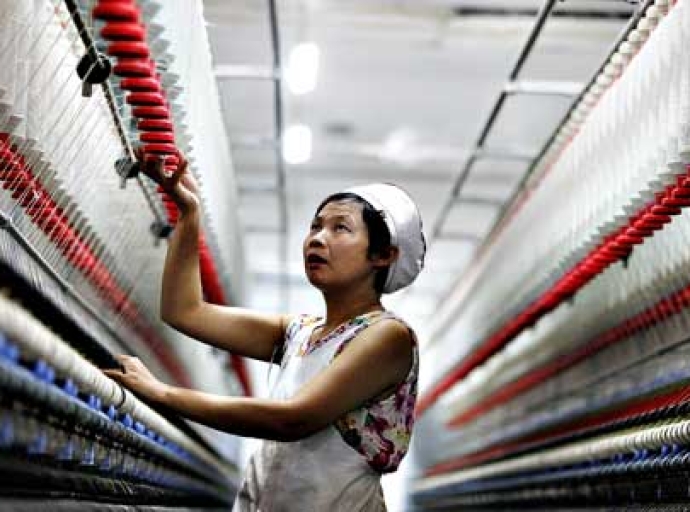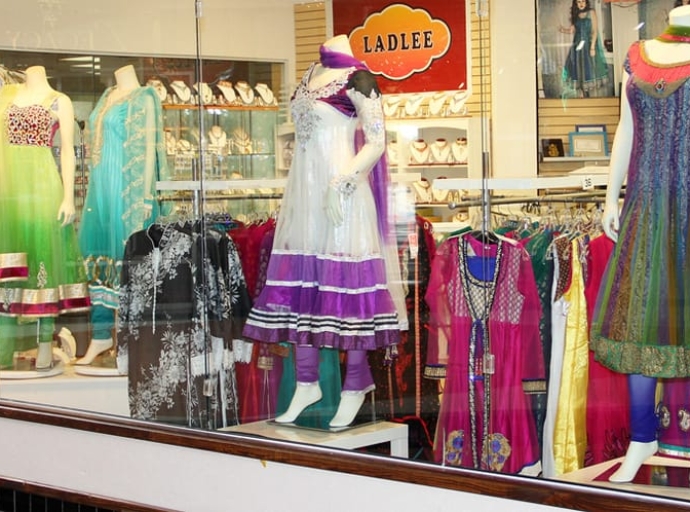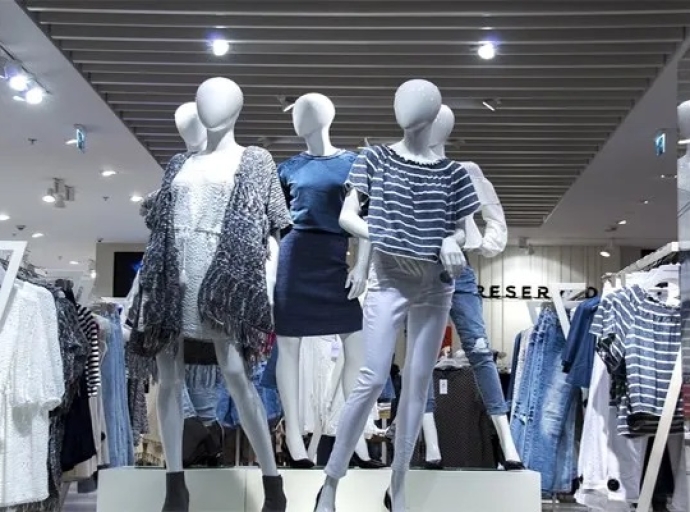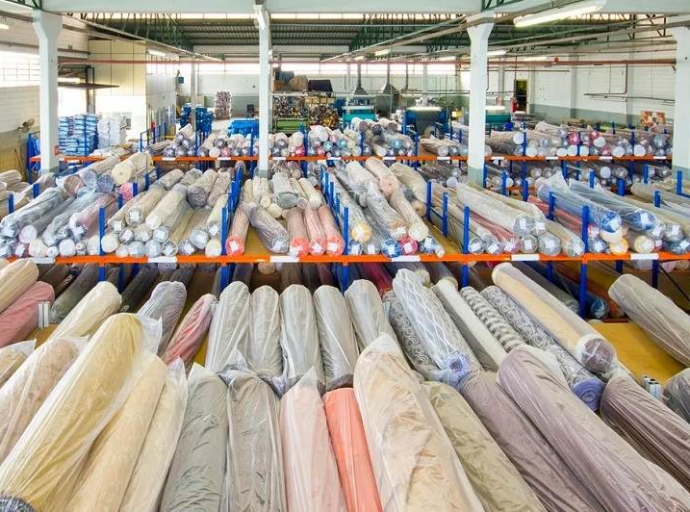15 June 2023, Mumbai
As the global economy began to recover from the pandemic crisis of 2020, real GDP increased by 3.3 percent globally in 2022. Although a global recession is not anticipated in 2023, certain mature and emerging economies (such as those in Latin America) will likely cause growth to slow.
However, it is anticipated that Asia's rising economies will dominate global growth in 2023. One percentage point of the 2.3 percent worldwide growth this year is predicted to come from China alone.
Stepping back; The last time China made such a significant contribution to global economic growth was in 2009, when almost all of the world's economies, save for China, entered a recession.
Global growth engine
China's resurgence in the textile industry post-pandemic holds significant global implications. With textile factories swiftly reopening in the Guangdong area, the workforce is rapidly gaining momentum.
This resurgence is not limited to domestic operations but extends to China's outbound foreign investments in the textile and apparel sector.
Impressively, these investments surpassed $6.7 billion between 2015 and 2020, emphasizing China's commitment to consolidating its position as a key player in the global textile market. As China's textile industry bounces back, its impact on the global economy and trade dynamics is poised to be substantial.
The textile factories in China are located in the Guangdong area. The reopening of these factories will have a positive impact on the global textile sector as it will increase the supply of textiles and apparel products.
China's Textile Demand Shows Signs of Improvement
China's textile industry is experiencing a potential upturn in end-user demand, especially in the domestic market, although sustainability remains uncertain. Analysts eagerly await the results of China's textile demand for the first quarter of 2023, as it shows some improvement compared to the second half of 2022.
While the end-user demand graph may approach the peak of the same period last year, the ability to sustain this growth throughout the season remains to be seen.
The East Asia and Pacific (EAP) region is expected to witness better growth figures, projected at 4.3% in 2023, as pandemic-related restrictions ease and business activity in China gradually recovers.
Challenges Ahead for Exports
A report by CCF Group highlights important facts about China's apparel segment's current growth. Firstly, improving exports in the first half of 2023 will be challenging, and performance in the second half will depend on the destocking situation in overseas markets.
Secondly, the sustainability of this demand hike is unclear, making it unreliable and difficult to maintain. Additionally, the upcoming autumn/winter demand is expected to be slow due to the high intermediate inventory from last year.
Domestic Demand Boosts China's Textile Industry
Currently, business is picking up in China's largest apparel wholesale markets, such as the Shisanhang Garment Wholesale Market in Guangzhou and the Sijiqing Costume Market in Hangzhou.
However, even the Spring Festival in February failed to significantly boost sales, with factories closed and workers returning home due to COVID infections.
The report also highlights the disparity between the East China and South China textile markets.
Sustainability of Growth; The South China market demonstrates stronger demand, driven by replenishment demand after the Spring Festival and a rebound in seasonal demand for the first half of 2023.
In contrast, the East China market lacks spring apparel, and the cotton yarn market is performing well despite previous declines in the cotton industry chain.
The printing and dyeing textile industry has faced challenges, with increased production costs leading to price hikes to recover losses. Supply chain confusion arises as dyeing factories rush to complete old orders while receiving new orders.
Uncertainty Remains
Although China's domestic fabric demand for the spring-summer season arrived early in February, demand for seasonal fabrics remains unreliable and unsustainable.
The first half of the year primarily sees three categories of textile demand: exports, seasonal fabric demand, and autumn/winter fabric stock preparation. However, there is poor demand for autumn/winter stock preparation in the first half of 2023 compared to the current positive demand.
The post-Zero COVID lockdown phase presents unpredictable demand for upcoming seasons, and the balance sheet of the autumn-winter 2023 season will reveal if China can regain its former glory in the global apparel export segment.
Changing paradigm
China's economic rebound in 2023 will be driven by industries in the service sector. We anticipate the service sector to be the engine of the recovery in 2023, just as it was in 2021 when the Chinese economy recovered from the pandemic downturn of 2020.
The lockdowns had an impact on manufacturing sectors as well, but consumer-facing sectors including transportation, retail trade, lodging, and dining took the worst hit.
However, the recovery of 2023 is not anticipated to be as great as it was in 2021 due to a considerably worse global growth environment coupled with a persistent property market downturn.
Base effect; A mechanical increase in the year-over-year statistic from extremely low levels is responsible for some of the predicted 5.3 percent growth in China's GDP in 2023.
The impact of the rising inflation
Contrary to certain hypotheses, it is not anticipated that China's reopening will significantly lessen constraints on the global supply chain. Since 2021, sluggish global supply networks have been a major contributor to rising inflation.
Could a complete liberalization of China's economy reduce inflation? We assert that "no" because of several factors. First, as shown by improved international shipping rates and delivery times towards the end of 2022 and into early 2023, supply chain stresses were already beginning to ease.
Softening global demand
This is probably due to the general slowdown in demand in major export markets as well as a shift in family spending from products to less trade-intensive services, the latter of which was suppressed during pandemic lockdowns.
As a result, exports of commodities from Asian economies began to trail in the second half of 2022 and were in the red by the beginning of 2023. Second, China's manufacturing output expanded by a robust 3% in 2022, so there was no discernible decline.
As they took the brunt of the lockdowns, several service sector industries experienced contractions at the same time. Finally, it is likely that the ongoing conflict in Ukraine, together with labor shortages, is contributing to supply chain problems.
Global headwinds
On the other hand, the liberalization of China would significantly increase inflation in the world energy markets. A percent of the world's oil imports come from China, which is a significant energy importer.
China purchased 12.7 million barrels of oil per day in 2021, which was comparable to imports from Europe. The Chinese economy's biggest oil consumers are the manufacturing sectors, which will account for 26% of GDP but 36% of oil demand in 2020.
However, although being less oil-intensive, service sector activities still account for an estimated 46% (in 2020) of oil demand due to their sheer magnitude, with transportation operations making a sizable contribution.
Oil Conundrum
Consequently, a significant rise in oil consumption is projected to follow China's economic recovery in 2023, which would be mostly driven by the services sector. Here, we focus primarily on the effect on energy demand.
Although demand for other commodities may also rise, we believe that the impact on energy will be greater because a large portion of the rebound is anticipated to originate from activity in the service sector.
It is not anticipated that manufacturing, which accounts for the majority of China's imports of commodities, will grow in 2023 at a rate higher than that seen in 2022.
Reopening of current projects and their impact
Due to China's reopening, global consumer price inflation may be 0.30 to 0.65 percentage points higher than current projections. Oil demand in China increased by 9.2 percent in 2021, decreased by 2.4 percent in 2022, and is expected to increase once again in 2023.
We examine three scenarios for the recovery in China's oil demand and its impact on inflation both domestically and internationally due to the high degree of uncertainty.
We anticipate that China's oil demand will likely increase by about 5% in the base case. A rise of roughly 2.5 percent is predicted in the low-growth scenario and a rise of about 7.5 percent in the high-growth scenario.
Inflationary expectations
According to Oxford Economics model simulations, the respective low, base, and high growth scenarios might increase global oil prices by 10, 15, or 20 US dollars per barrel. Global Consumer Price Index (CPI) inflation could rise by 0.3 to 0.6 percentage points as a result year over year.
The regional impact on CPI inflation will differ; the US (0.40-0.83 ppt) and India (0.35-0.75 ppt) would see the greatest upward pressure, followed by the Euro Area (0.30-0.60 ppt) to a smaller but still significant level. China's regional inflection is one of the weakest among the main global economic blocs.
Macro-Prudential Policies
Increased inflationary pressures make monetary policy more difficult and may make harsh landings more likely.
Globally, central banks have increased interest rates in reaction to strong inflation that began in 2021 and picked up significantly in 2022.
Due to a combination of falling commodity prices, decreased supply chain pressures, and fading base effects as high readings from the prior year disappear from the year-over-year print, total consumer inflation has slowed or even decreased since mid-2022. Price pressures, nevertheless, are still high and are predicted to stay that way.
Pass-through of earlier increases in input costs, increased demand for services, and swifter wage rise in many economies are all contributing factors.
We also include China's reopening on this list. This means that in many economies, monetary policy will remain tight or become even more restrictive, which will result in slower economic development and, in some circumstances, longer and/or deeper recessions than expected.


































